
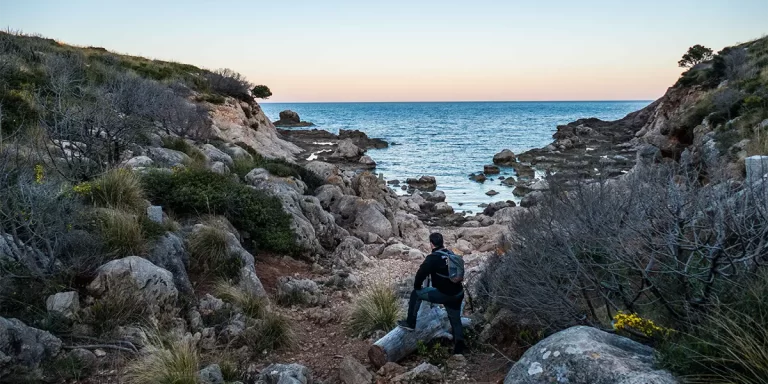
Backpacking in Spain offers immense variety for outdoor enthusiasts, from the rocky peaks of the Pyrenees to the sun-drenched beaches of the Costa Brava, including popular destinations like the Camino de Santiago.
And that’s what this post is all about – backpacking in Spain. We’ll provide tips to help you prepare for backpacking in this diverse country as well as showcase the best multi-day trails in Spain.
Interested? Let’s get started.
Explore Spain’s best scenic long trails for epic adventures:
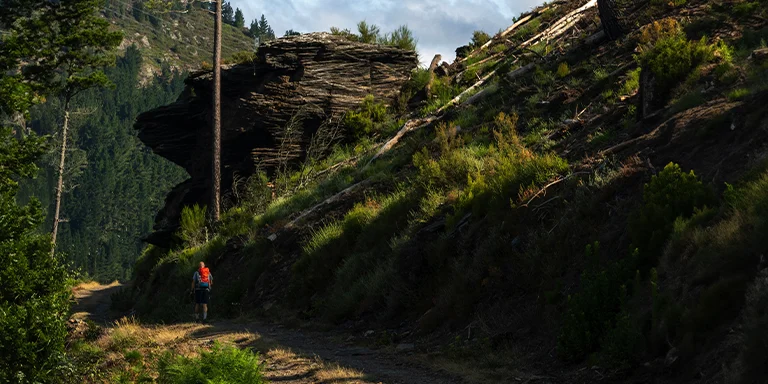
Length: 192.3 mi / 309.5 km
Type: Point to point
Difficulty: Hard
Elevation Gain: 33 169 ft / 10 110 m
Location: Reserva de la Biosfera Río Eo, Oscos y Tierras de Burón
Estimated Hiking Calorie Burn: 44 200 calories
More Details: See on AllTrails
The Primitive Way trail travels 192 miles from Oviedo to Santiago de Compostela in Spain’s scenic Asturias mountains. Considered one of the more challenging routes on the famous Camino de Santiago pilgrimage route, it takes around 89 hours to complete. Dating back to the 9th century, hikers traverse a mix of trails, roads, and rocky paths with striking mountain scenery along the way. Go in summer for comfortable temperatures and bring trekking poles to ease tired legs over long days on challenging terrain. With incredible views and a bit of history, it offers a beautiful backpacking escape despite its difficulty over varied terrain between Oviedo and Santiago de Compostela.

Length: 30.4 mi / 48.9 km
Type: Point to point
Difficulty: Hard
Elevation Gain: 3687 ft / 1124 m
Location: Estella-Lizarra
Estimated Hiking Calorie Burn: 7500 calories
More Details: See on AllTrails
The Geneva Camino trail is a 30-mile point-to-point route near Estella-Lizarra, Spain. Taking around 12.5 hours to complete, it offers a challenging section of the multi-week long Geneva Way pilgrimage from Switzerland to Santiago de Compostela. Traversing historic towns and French villages between August-September, hikers enjoy vineyards, mountain scenery of the Alps, and cultural attractions along the mixed terrain route of rugged trails and roads. Sections involve off-road hiking over rocky paths rewarding hikers with stunning views. Though featuring beautiful landscapes, summer hiking brings hot conditions when sun is exposed.
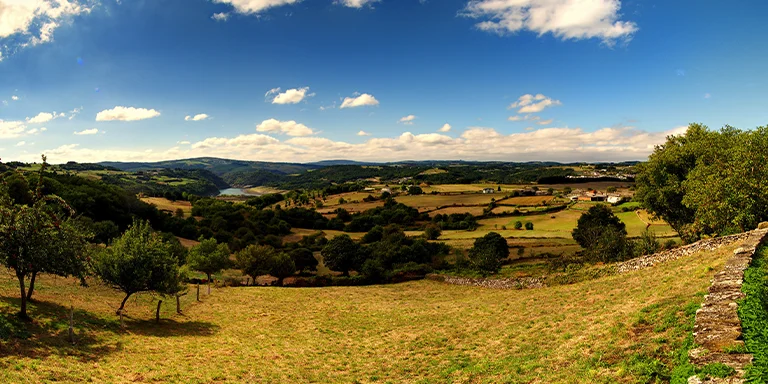
Length: 70.8 mi / 113.9 km
Type: Point to point
Difficulty: Hard
Elevation Gain: 9816 ft / 2992 m
Location: Reserva da Biosfera Ribeira Sacra e Serras do Oribio e Courel
Estimated Hiking Calorie Burn: 15 800 calories
More Details: See on AllTrails
The French Way trail covers 71 miles near Sarria, Spain, taking around 31 hours to complete as part of a challenging multi-week pilgrimage along the famous Camino de Santiago route. Legend says St. James the Apostle is buried in Santiago de Compostela, drawing hikers, cyclists and tour groups year-round for spiritual growth. Late May offers ideal cool mornings and warmer days to traverse the stunning northern Spanish landscapes. Sections involve rocky and cobblestone paths rewarding hikers with scenic views, though rain helps cool down the hotter mid-June terrain.
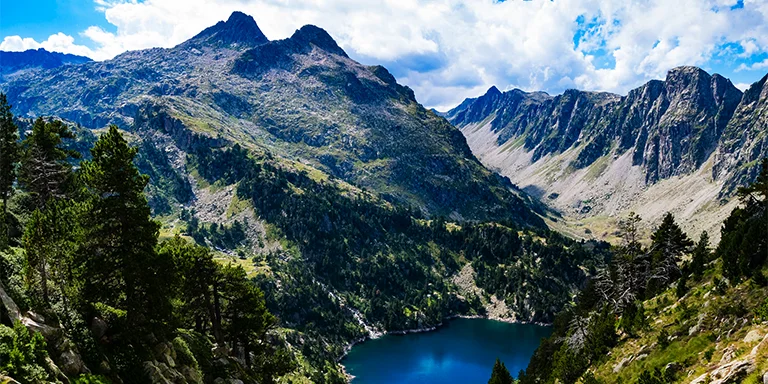
Danel Solabarrieta, CC BY-SA 2.0, via flickr
Length: 39.6 mi / 63.7 km
Type: Point to point
Difficulty: Hard
Elevation Gain: 14 032 ft / 4277 m
Location: Aigüestortes i Estany de Sant Maurici National Park
Estimated Hiking Calorie Burn: 12 750 calories
More Details: See on AllTrails
The 39-mile Carros de Foc loop near Lérida is for experienced backpackers. The scenic but challenging trail through the Pyrenees takes about a week, with advance reservations required. Despite beautiful scenery, the terrain is repetitive. The trail is sparsely marked with snow lingering as late as mid-June. Plan for 6-9 hours hiking daily over rocky and snowy mountain passes between huts offering basic amenities. Recommended itineraries cover 9+ grueling miles and 6 passes a day. For a comfortable 7-day hike, take a more relaxed pace. With proper planning and experience, the solitude and pristine nature of this stunning trail are enjoyable.
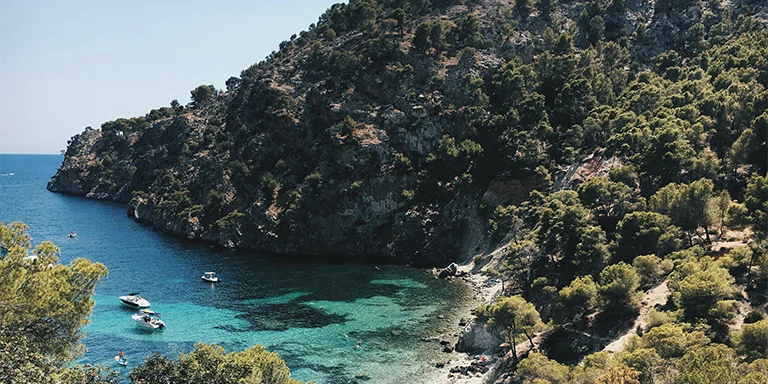
Length: 83.8 mi / 134.8 km
Type: Point to point
Difficulty: Hard
Elevation Gain: 19 996 ft / 6095 m
Location: Finca Pública de Planícia
Estimated Hiking Calorie Burn: 21 000 calories
More Details: See on AllTrails
The challenging 84-mile point-to-point Dry Stone Route spans Mallorca from Port D’Andraxt to Pollença. Despite the island’s popularity, solitude can be found on this scenic trail through the Tramuntana Mountains and Mediterranean views. Plan for multi-day hikes between shelters requiring reservations. Beware unmarked, steep scrambles up and down, especially at the top. It’s easy to lose the route. Carry plenty of water as shade is minimal. While considered a great trail overall, inexperienced hikers may feel unsafe due to tricky navigation.
The Mediterranean climate brings precipitation in spring and fall, with hot, dry summers ideal for higher elevation trekking:
Check the weather forecast for Spain (Madrid), before selecting your gear. Spain has five climate zones, with Madrid primarily experiencing a continental climate, covering 70% of the country.
Remember, the north of Spain is cooler, and the south is warmer, so plan accordingly:
| Jan | Feb | Mar | Apr | May | Jun | Jul | Aug | Sep | Oct | Nov | Dec | |
|---|---|---|---|---|---|---|---|---|---|---|---|---|
| High °F | 51 | 55 | 62 | 66 | 75 | 86 | 92 | 91 | 82 | 70 | 58 | 50 |
| Low °F | 35 | 37 | 41 | 45 | 52 | 60 | 65 | 65 | 59 | 51 | 42 | 45 |
| Rain/Snow (D*) | 7 | 6 | 10 | 9 | 9 | 6 | 2 | 3 | 6 | 8 | 8 | 9 |
Not sure if Spain is right for you?
Don’t forget to check out our backpacking guides for France and Portugal.
Campfires while backpacking in Spain require careful planning as regulations are strict to prevent wildfires. Obtain required permits if fires are exceptionally allowed only in designated campfire rings or grills. Fires are often prohibited during dry seasons when wildfire risk is high. Research specific rules on open flames, which vary across Spain’s provinces and national parks. Carry a camp stove and fuel as a safer alternative for cooking food.
When hiking or backpacking in Spain, prepare for hot conditions by packing plenty of water, sun protection, and electrolyte supplements. Research your route thoroughly, especially in more remote areas like the Pyrenees. Carry a map, compass, GPS device, and a first aid kit. Tell others your plans and schedule check-ins. Avoid hiking alone whenever possible. Watch your footing on steep, rocky trails. Learn some basic Spanish phrases in case you need to ask for help. Study signs and stay on marked trails to avoid trespassing on private land.
When you go hiking or backpacking in Spain, stay alert and make noise to avoid surprising wildlife. Give bears, wolves, wild boars, and other animals plenty of space. Never approach, feed, or try to touch them. After your hike, wear insect repellent and check for ticks to prevent diseases. Be careful around ground squirrel and marmot burrows. If you’re followed by protective livestock dogs, stand still and then back away slowly. If you get bitten or scratched by an animal, make sure to seek medical care right away.
No. With stunning landscapes of mountains, coastlines, and rolling hills, Spain is a premier backpacking destination that draws outdoor travelers from across the globe. Its extensive network of walking trails like the Camino de Santiago provide backpackers prime opportunities to experience the country’s natural beauty and cultural heritage. Whether traversing the Pyrenees, exploring Andalusia’s white villages, or meandering the Costa Brava, Spain offers diverse terrain for backpackers of all levels to enjoy while meeting fellow adventurers along the way. The Mediterranean climate and excellent public transportation also make it an appealing year-round backpacking destination for people looking to travel on a budget.
U.S. citizens do not need a visa to visit Spain for tourist or business trips up to 90 days within a 180-day period. Travelers simply need to present a valid U.S. passport upon arrival to Spain and may enter the Schengen area (which includes Spain) for stays of up to 90 days within any 180-day period without obtaining a visa beforehand.